Wild Cockatiels: Unveiling Their Natural Habitat and Behaviors
Dive into the world of wild cockatiels. Uncover their natural habitats and behaviors to understand these fascinating birds better.
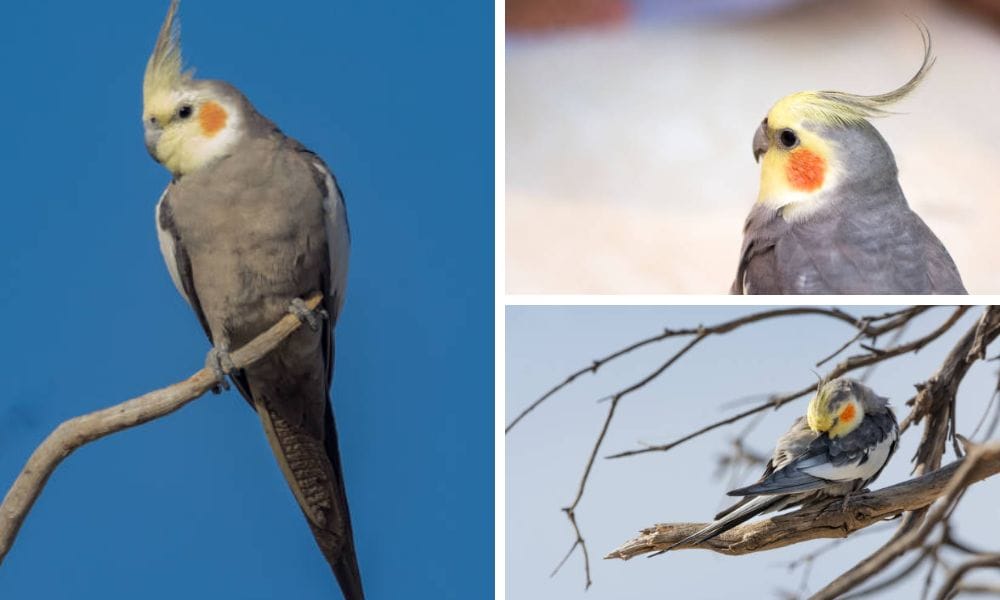
Key Takeaways:
- Natural Habitat: Discover the unique environments in Australia where wild cockatiels thrive.
- Diet and Feeding: Learn what wild cockatiels eat and how their diet sustains them.
- Social and Reproductive Behaviors: Understand the complex social structures and breeding habits of these fascinating birds.
Introduction to Wild Cockatiels
Wild cockatiels, unlike their domesticated counterparts, are vibrant and dynamic small parrots native to the vast landscapes of Australia. Known for their distinctive crest and the charming orange cheek patch, these birds offer a fascinating glimpse into the world of wild avians. The cockatiel ( Nymphicus hollandicus ) is a member of its own branch of the cockatoo family. This article explores the natural habitats, diets, and behaviors of wild cockatiels, providing insights into their lives away from the pet trade.
Physical Description and Characteristics
Cockatiels are known for their distinctive physical characteristics, which set them apart from other bird species. These small parrots typically exhibit a grey and white plumage, with males showcasing a striking yellow head and vibrant orange cheek patches, while females have a more subdued grey head with muted orange patches. One of the most notable features of cockatiels is their crest, which is held flat against the head when they are relaxed or held upright when they are excited or alarmed. This crest is not just for show; it plays a crucial role in their communication and emotional expression.
Their tail feathers are long and pointed, adding to their elegant appearance and aiding in their agile flight. The beak of a cockatiel is another distinctive feature, curved and black, perfectly designed for cracking seeds and foraging. Additionally, cockatiels possess zygodactylous feet, with two toes facing forward and two backward, which provide a strong grip for perching and climbing. In terms of size, cockatiels are relatively small, with an average length of 30-33 cm and a weight of 80-100 grams. These physical traits not only make them visually appealing but also well-adapted to their natural habitats.
The Natural Habitats of Cockatiels
Wild cockatiels are primarily found across the interior of Australia, thriving in regions that offer open country with access to fresh water. Cockatiels nest in tree hollows, particularly near water sources. These areas typically include savannas, bushlands, and grasslands, where tree hollows often serve as shelters and nesting sites. Wild cockatiels thrive in open areas, which provide essential resources like water and food. The adaptability of cockatiels to varying arid environments helps them to manage the extreme conditions of their homeland.
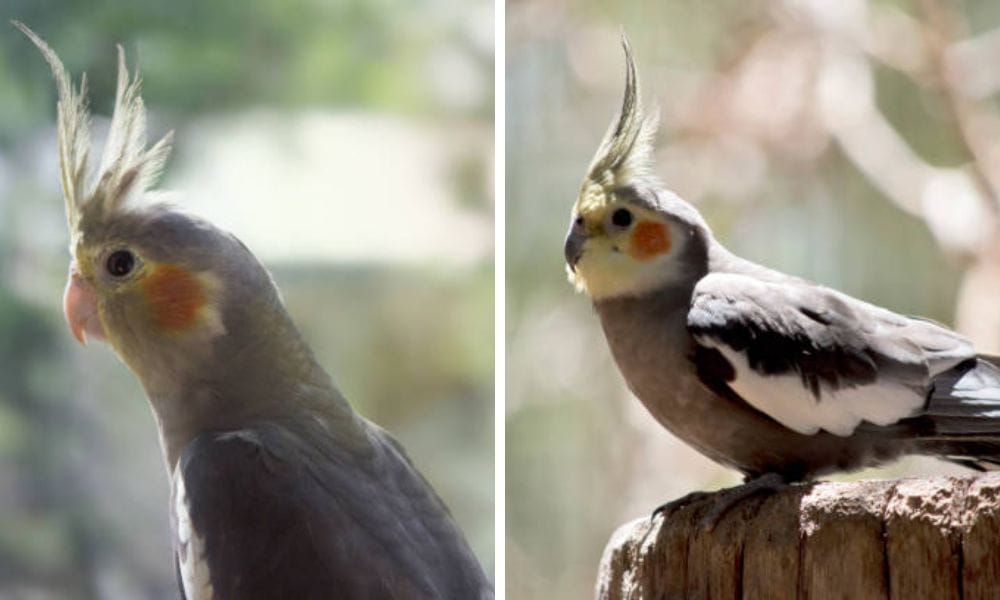
Understanding the Cockatiel's Diet
In the wild, cockatiels primarily feed on a varied diet consisting of grass seeds, fruits, berries, and occasionally insects. Their diet includes a variety of foods such as seeds, fruits, and occasionally insects. During droughts or in harsher environments, these birds exhibit remarkable adaptability by foraging for food over large areas. The ability to fly long distances in search of food highlights their resilience and resourcefulness in the wild.
Social Structure and Communication
Cockatiels are notably social creatures, often seen in large flocks that provide safety in numbers from predators. Engaging in daily activities together is essential for their social health and happiness. These flocks also facilitate complex social interactions and communication among individuals. Their vocalizations can be heard over long distances, serving as alarm calls or as a means to regroup.
Adaptations to Climate and Weather
Wild cockatiels, native to the arid regions of Australia, have developed fascinating adaptations to thrive in their harsh environments. These birds are equipped to handle both extreme heat and sudden drops in temperature, which are common in their natural habitat. Their feathers provide excellent insulation, and during the hottest parts of the day, wild cockatiels may be found resting in the shade of trees or in tree hollows to stay cool. This behavior helps them conserve energy and maintain their body temperature without expending too much water through panting, which is crucial in arid zones where water can be scarce.
Moreover, during colder weather, these birds fluff up their feathers to trap heat, keeping them warm through chilly nights and early mornings. Wild cockatiels also have a behavior known as "sunning" where they orient their bodies towards the sun, spreading their wings and tail feathers to absorb as much heat and light as possible. This not only aids in temperature regulation but also helps in the synthesis of Vitamin D, essential for their overall health. Observing these behaviors offers a glimpse into how wild cockatiels ingeniously manage their energy and physiological needs in response to their climatic conditions.
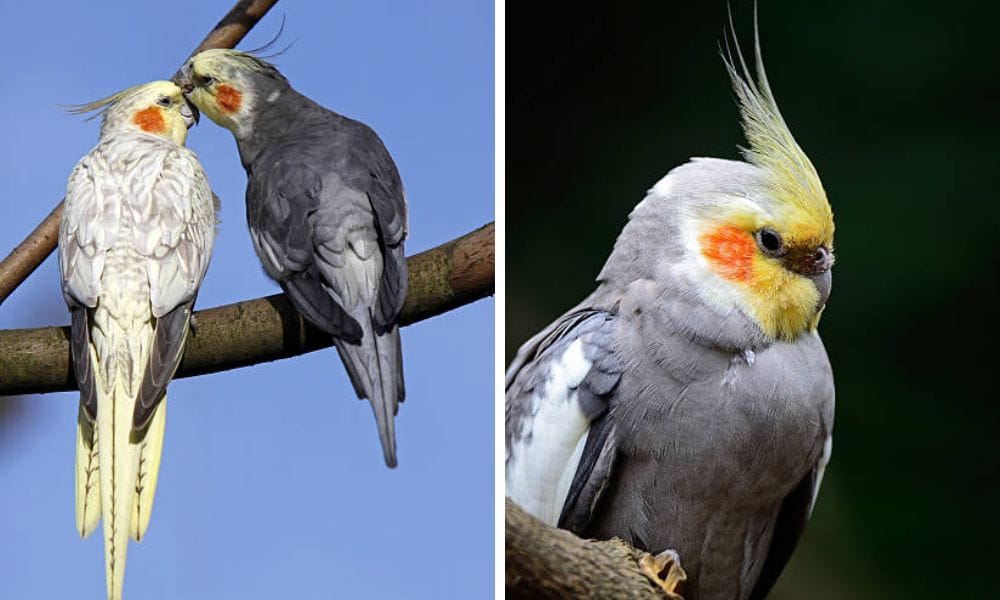
Migratory Patterns of Wild Cockatiels
Wild cockatiels, primarily native to the vast landscapes of Australia, exhibit fascinating migratory behaviors that are crucial for their survival. Unlike some other parrots, wild cockatiels are nomadic, moving across large areas in response to the availability of food and water. This movement is not just random wandering; it's a strategic relocation to capitalize on the seasonal abundance of grass seeds and water. Their ability to fly long distances is a testament to their adaptability in the wild, ensuring they thrive in various environmental conditions.
Interestingly, the migratory patterns of wild cockatiels can also give insights into the health of their habitat. When large flocks move unexpectedly early or late in the season, it might indicate changes in their ecosystem, such as drought or excessive rainfall. Observations of these patterns are crucial for conservation efforts, providing data that can help predict environmental shifts and plan for habitat preservation. This nomadic lifestyle also highlights the difference between wild cockatiels and pet cockatiels, which do not display such extensive migratory behavior due to their stable, controlled environments.
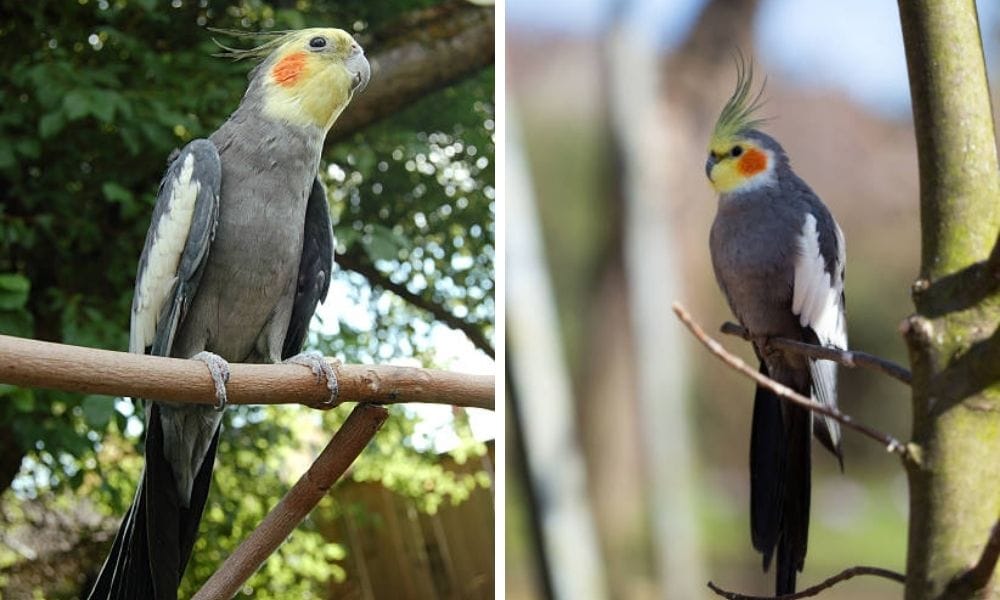
Impact of Seasonal Changes on Wild Cockatiels
Wild cockatiels, like many Australian birds, exhibit fascinating adaptations to seasonal variations which significantly influence their behaviors and survival strategies. The breeding season ends when the chicks fledge, signaling the end of the breeding season. During the wet season, when food is abundant, these birds thrive on a varied diet of seeds, fruits, and berries, showcasing their ability to exploit available resources. This abundance also coincides with their breeding season, where the increased food supply supports the energy demands of raising chicks. Conversely, in the dry season, wild cockatiels may travel greater distances in search of food and water, demonstrating their resilience and adaptability to harsher conditions.
The seasonal shifts not only affect the wild cockatiels’ diet but also their social interactions. In times of plenty, large flocks are often seen, which enhances their chances of locating food and water but also increases the risk of predation. During leaner times, these flocks may disperse into smaller groups to reduce competition for scarce resources. This dynamic flocking behavior underscores the complexity of their social structure and highlights the critical role of environmental cues in their survival and reproductive strategies.
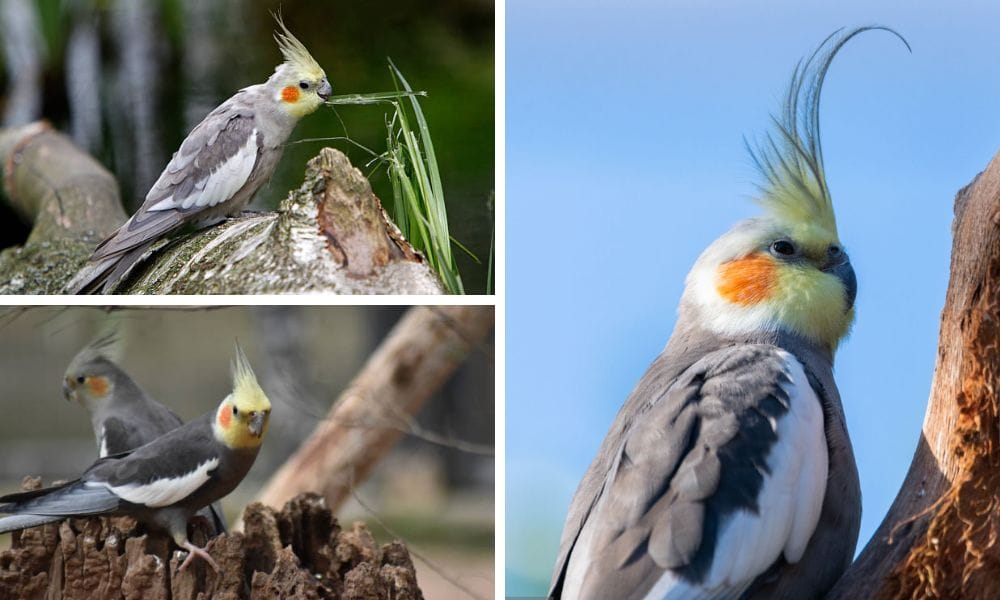
Wild Cockatiels and Human Interaction
Human interaction has played a significant role in shaping the life of wild cockatiels, ranging from habitat disruption to the pet trade. In regions where natural habitats are converted into agricultural or urban areas, wild cockatiels often lose their nesting sites and food sources, pushing them to adapt to new environments or face decline. Additionally, the allure of their charming personalities and distinctive crest has made them popular pets, leading to increased capture from the wild, which can deplete natural populations and disrupt local ecosystems.
On a more positive note, awareness and interest in wild cockatiels have also led to conservation efforts and increased research into their natural behavior and ecology. Bird enthusiasts and researchers often collaborate to monitor wild populations, rehabilitate injured birds, and educate the public about the importance of preserving natural habitats. Such interactions can provide a lifeline for these small parrots, ensuring their survival amidst changing environmental and social landscapes.
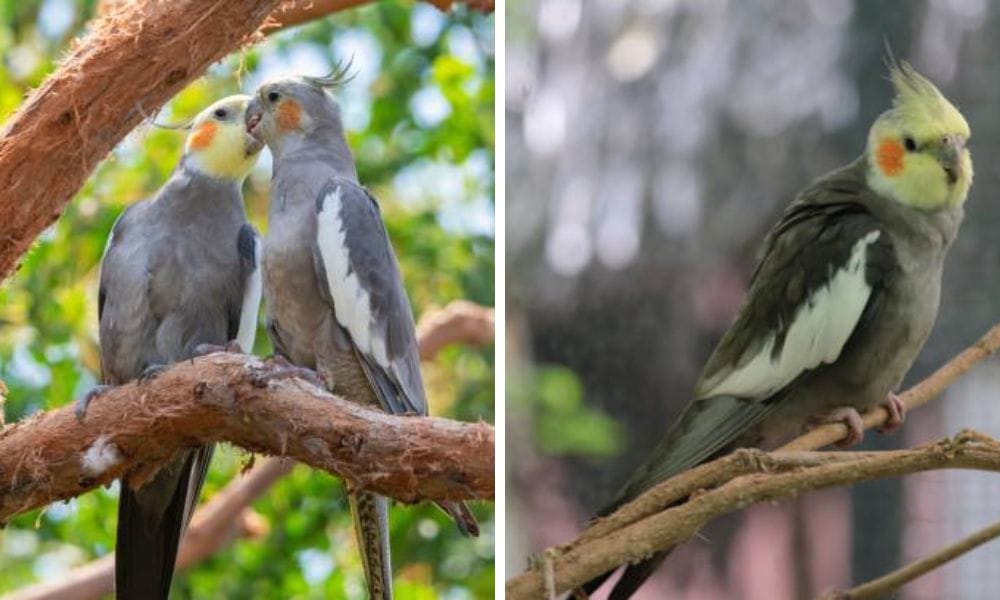
Cockatiel Vocalizations and Their Meanings
Cockatiels are not just visually striking with their distinctive crest and cheek patches; they are also one of the most vocal wild birds. The sounds produced by cockatiels play a significant role in their communication and social interactions. Their calls and songs are a vital part of their social interactions and are used for a variety of purposes, such as attracting mates, signaling danger, and maintaining flock cohesion. Male cockatiels are particularly noted for their loud calls, which can be heard over long distances, serving as alarm clocks to warn their fellow birds of potential threats or to woo female cockatiels with their melodious tunes.
Each vocalization has a specific meaning, and understanding these can provide a fascinating glimpse into their social structure. For instance, a sharp, repeated call may indicate immediate danger, while a complex melody might be part of a courtship ritual. Researchers and bird enthusiasts alike continue to study these vocal patterns not only to understand the species better but also to enhance the care of pet cockatiels, ensuring their needs are met in captivity by replicating, as closely as possible, the rich social interactions they would experience in the wild.
Interaction with Other Species
In the vast ecosystems of Australia, wild cockatiels are not solitary creatures but interact with a variety of other bird species. Cockatiels are a subgroup of cockatoos, with distinctive features that aid in their identification and survival. These interactions can range from competitive to symbiotic. For instance, cockatiels often share their feeding grounds with other parrots or small birds. They primarily feed on seeds, including grass seeds and occasionally sunflower seeds, which are also favored by other bird species. This can lead to competitive scenarios, especially in areas where food resources are limited. However, such situations often encourage the dispersion of birds across different areas, reducing over-concentration in one place.
On the symbiotic front, cockatiels benefit from the alarm calls of other birds. Being part of large flocks, cockatiels are often among the first to be alerted by the alarm calls of smaller, more agile birds, signaling the presence of predators. This early warning system allows them to escape to safety, demonstrating an effective mutualistic relationship. Additionally, their presence in diverse bird communities helps in the pollination of native plants and the dispersal of seeds, showcasing their integral role in maintaining ecological balance. Observing these interactions provides valuable insights into the dynamics of Australian ecosystems and the interconnectedness of species.
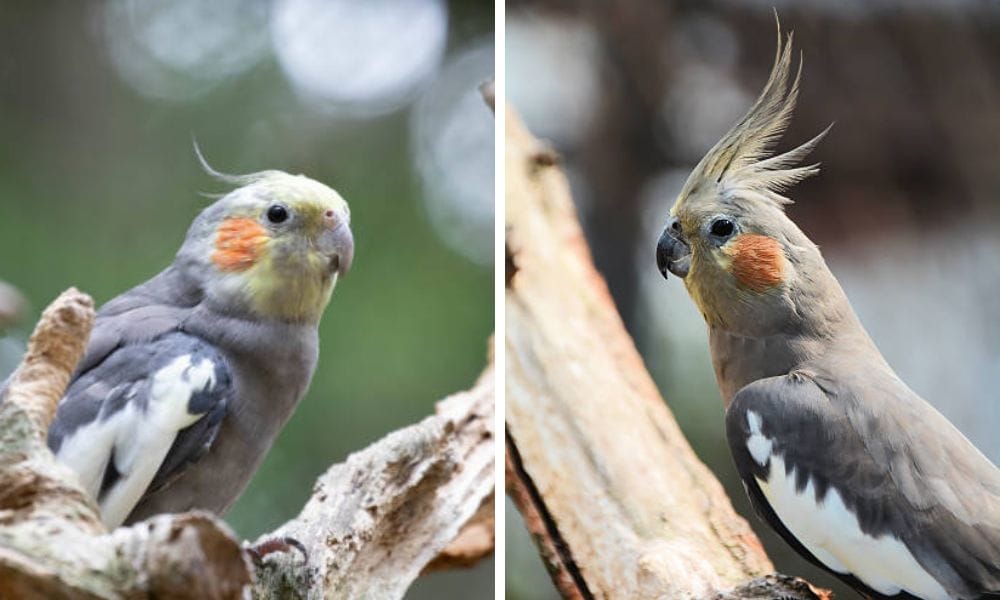
Breeding Behaviors and Nesting
Breeding season brings unique behaviors to the forefront, with male cockatiels displaying their vibrant cheek patches and erect crests to attract females. Both male and female chicks share responsibilities in the incubation and rearing processes. Nesting typically occurs in tree hollows, where both parents take turns incubating the eggs and feeding the chicks. The collaborative nature of parental care during the hatching process ensures higher survival rates for the offspring.
Factors Affecting Cockatiel Lifespan
The lifespan of a cockatiel is influenced by a variety of factors, including diet, environment, and overall health. In the wild, cockatiels can live for up to 10-15 years, while those in captivity can enjoy a longer lifespan of up to 20-25 years. Access to water and a balanced diet rich in seeds, fruits, and vegetables are crucial for their longevity. Regular exercise, which wild cockatiels naturally get through flying and foraging, is also important for maintaining their health.
In captivity, providing a safe and comfortable living environment, along with regular veterinary check-ups, can significantly enhance a cockatiel’s lifespan. It’s important to be aware of common health issues such as respiratory problems and feather plucking, which can affect their well-being if left untreated. By ensuring a nutritious diet, ample exercise, and prompt medical care, both wild and pet cockatiels can lead long, healthy lives.
Comparison to Pet Cockatiels
While wild cockatiels and pet cockatiels share many similarities, there are also some key differences in their lifestyles and care requirements. Pet cockatiels, often kept in captivity, are bred for their colorful plumage and ability to mimic human speech. They are typically fed a diet of seeds and pellets, and may not have the same level of access to water and exercise as their wild counterparts. However, with proper care and attention, pet cockatiels can thrive in a domestic environment and make wonderful, loving companions.
In contrast, wild cockatiels are adapted to living in their natural habitat, where they forage for food and interact with other birds in their flock. They have the freedom to fly long distances in search of food and water, which keeps them physically fit and mentally stimulated. While pet cockatiels may not experience the same level of physical activity, they can still enjoy a fulfilling life with the right enrichment and care. Understanding these differences helps in providing the best possible care for pet cockatiels, ensuring they remain healthy and happy. If you have a pet cockatiel, below you find nesting boxes that fit their needs.
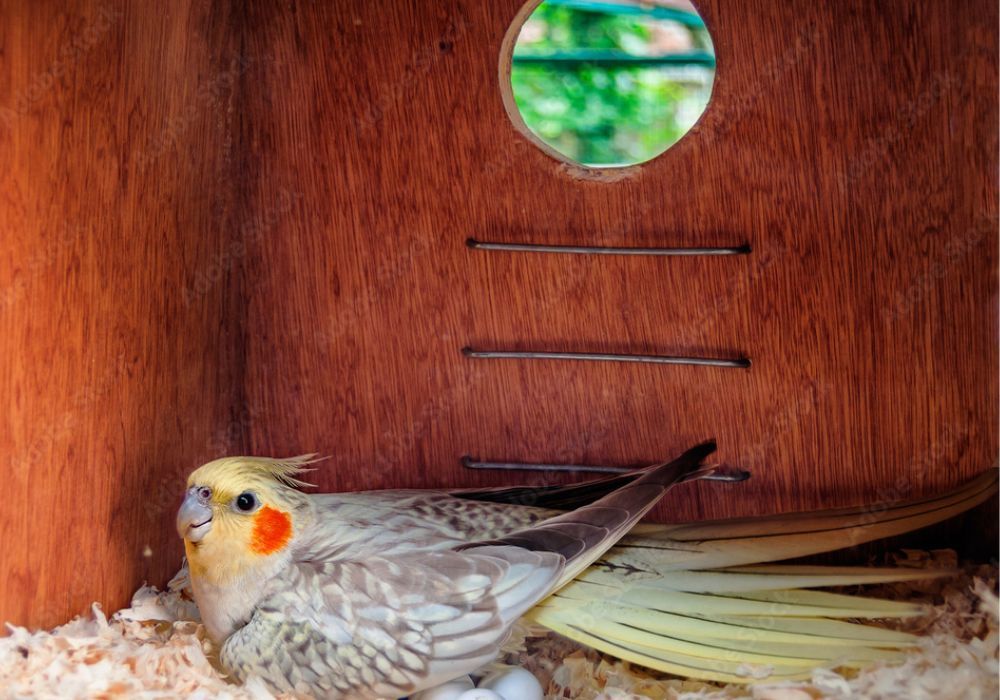
Unique Characteristics and Adaptations
Cockatiels possess a range of unique characteristics and adaptations that enable them to thrive in their environment. One of the most remarkable traits is their ability to mimic human speech, a skill made possible by their advanced cognitive abilities and the syrinx, the vocal organ located at the base of the trachea. This ability to learn and repeat phrases and words in context makes them popular pets for people who enjoy interacting with their birds.
In addition to their vocal abilities, cockatiels have several physical adaptations that aid in their survival. Their strong beak is perfect for cracking seeds and foraging, while their zygodactylous feet allow them to perch securely on branches and navigate their environment with ease. The distinctive crest on their head is not just for show; it plays a crucial role in communication, allowing them to express emotions and interact with other birds. These unique characteristics and adaptations make cockatiels fascinating birds, well-suited to their natural habitats and popular as pets around the world.
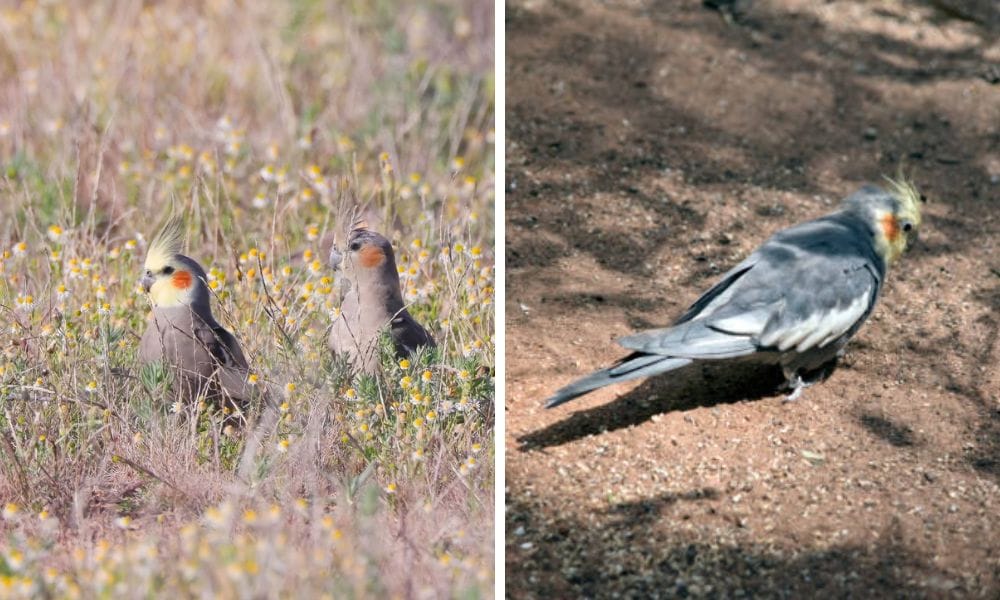
The Role of Cockatiels in the Ecosystem
As part of the ecosystem, cockatiels help in seed dispersal through their diet. Other features of their environment, such as their camouflage and communication methods, play a significant role in their survival. The seeds that pass through their digestive system are often deposited in new locations, aiding in plant propagation. Their role extends beyond just consumers, as they also fall prey to larger birds and animals, contributing to the ecological food chain.
Threats to Wild Cockatiels
Despite their adaptability, wild cockatiels face threats from habitat loss due to agriculture and urbanization. Wild cockatiels are often regarded as pests in agricultural settings, particularly in Australia. Additionally, the pet trade has led to a significant number of these birds being captured, which impacts their natural populations. Conservation efforts are crucial to ensure that wild cockatiels can thrive in their natural habitats.
Conservation and Protection Efforts
Efforts to protect wild cockatiels include habitat preservation and regulations on the pet trade. Protected areas and national parks in Australia play a crucial role in providing safe havens for these birds. Education and awareness campaigns also help in reducing illegal trapping and trading of wild cockatiels.
Observing Wild Cockatiels Responsibly
For bird enthusiasts and nature lovers, observing wild cockatiels can be a rewarding experience. However, it is vital to do so responsibly by maintaining a distance and not disturbing their natural behaviors. Using binoculars and following guidelines from wildlife organizations can enhance the experience while ensuring the birds' safety.

Summary
Wild cockatiels offer a captivating look into the life of avian species in their natural Australian habitats. Understanding their diet, social behaviors, and breeding patterns not only enriches our knowledge but also highlights the importance of conservation efforts. By protecting these environments and ensuring sustainable practices, we can help maintain the delicate balance of these ecosystems and the species that inhabit them.
FAQ Section
Q1: How long do wild cockatiels live? A1: Cockatiel lifespan of wild cockatiels can be up to 10-15 years, depending on environmental factors and predation pressures. Providing a high quality of life through proper nutrition, exercise, and emotional stimulation is crucial for their longevity.
Q2: Can wild cockatiels be tamed? A2: While wild cockatiels are naturally more cautious around humans, with patience and time, they can become accustomed to human presence. However, it is important to note that wild cockatiels are best appreciated in their natural environment and should not be captured for taming.
Q3: How can I help in the conservation of wild cockatiels? A3: Supporting local and international bird conservation organizations, advocating against illegal pet trade, and spreading awareness about the natural habitats of wild cockatiels are effective ways to contribute to their conservation.


